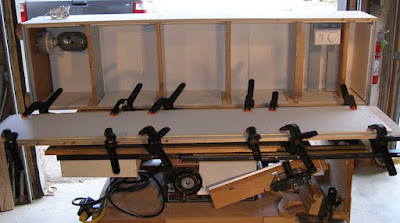Tom Iovino's 'Get Woodworking Week' was conceived to encourage more people to try their hands at the craft. Encouraging beginners to adopt the attitude "I Can Make This" has long been one of my focal points. Here are some pointers to get you started if you've ever thought of making anything out of wood.
Okay, so you've decided you want to try woodworking, and you're full of questions. 'What will I need?' and 'How do I begin?' Well, you don't know it, but you are tremendously lucky, because with little effort you can find a wealth of information and guidance at your fingertips. Woodworkers just happen to be a set of the most generous, helpful and willing instructors on the planet. They love their craft so much, they are always excited to have someone express an interest and ask questions. And the internet? If you google a question, the number of sources for its answer may be overwhelming. I'll help with that with a few links at the bottom of this post.
First off, you'll begin assembling a tool kit depending on what beginner's project you decide to tackle. We buy tools as we need them, not in kits or bundles. Learning with hand tools before power tools will teach more about the wood and how it reacts than jumping right in with thousands of dollars and outfitting a powered shop. Think of it this way: to work wood, you'll need something to cut with, to drill with, to measure with, to glue with and to clamp tight with. Oh, and a library. Here are two books I'd recommend reading, to better help you understand how all this works:
This one, because the author explains many ways of making any joint you may need or want. He shows many home-built jigs for assembly and several methods for each procedure.
And this one by Andy Rae, with tips, tricks, recommendations,
alternatives and guidance in all things wood.
And if you have special interests such as carving or turning or fireplace mantels, here is a long list of woodworking books for you to consider:
Book Reviews at WoodCentral.com
The next step is deciding on a project to start with. The internet references below can help with that, but consider deciding to make something
you want to do, for a specific purpose. Maybe a coat-hangar shelf or a bathroom shelf. You can see it in your mind, with hooks on or pegs. You know it has to fit a space, say 22" long, because a wall gets in the way if it's any longer than that, or it won't look good hung beside a mirror if it's too close to it. Think of something you want to make, and where it has to go. Consider its stability. For example, if you need another book shelf and you want it to stand on the floor, it may be more sturdy if the bottom shelf is wider than the top shelf, so heavier loads can be stored down below and anchor it against the wall by weight. Learning by doing will teach you these things, but thinking ahead can save you some misdirected time. You can always go to a woodworking forum and jump right in to ask a question, too.
So, to begin, here are some internet references to get you started.
Fine Woodworking's StartWoodworking.com has tips, plans and lots of resource listings.
WoodFinder.com is a great resource for finding suppliers and retailers for wood sold close by.
Tips from WomenInWoodworking.com
has a listing of my past Starting Points columns and lots of help for beginner's projects.
Be sure to check out other Wood Bloggers' Get Woodworking posts from Tom Iovino's Blog at Tom's Workbench.
If you decide to set your mind to attempt this, you're in for a very satisfying experience. Nothing beats hearing a family member or neighbor say, "You mean you
built this?" in awe of your abilities.
Go ahead, Try It.




























